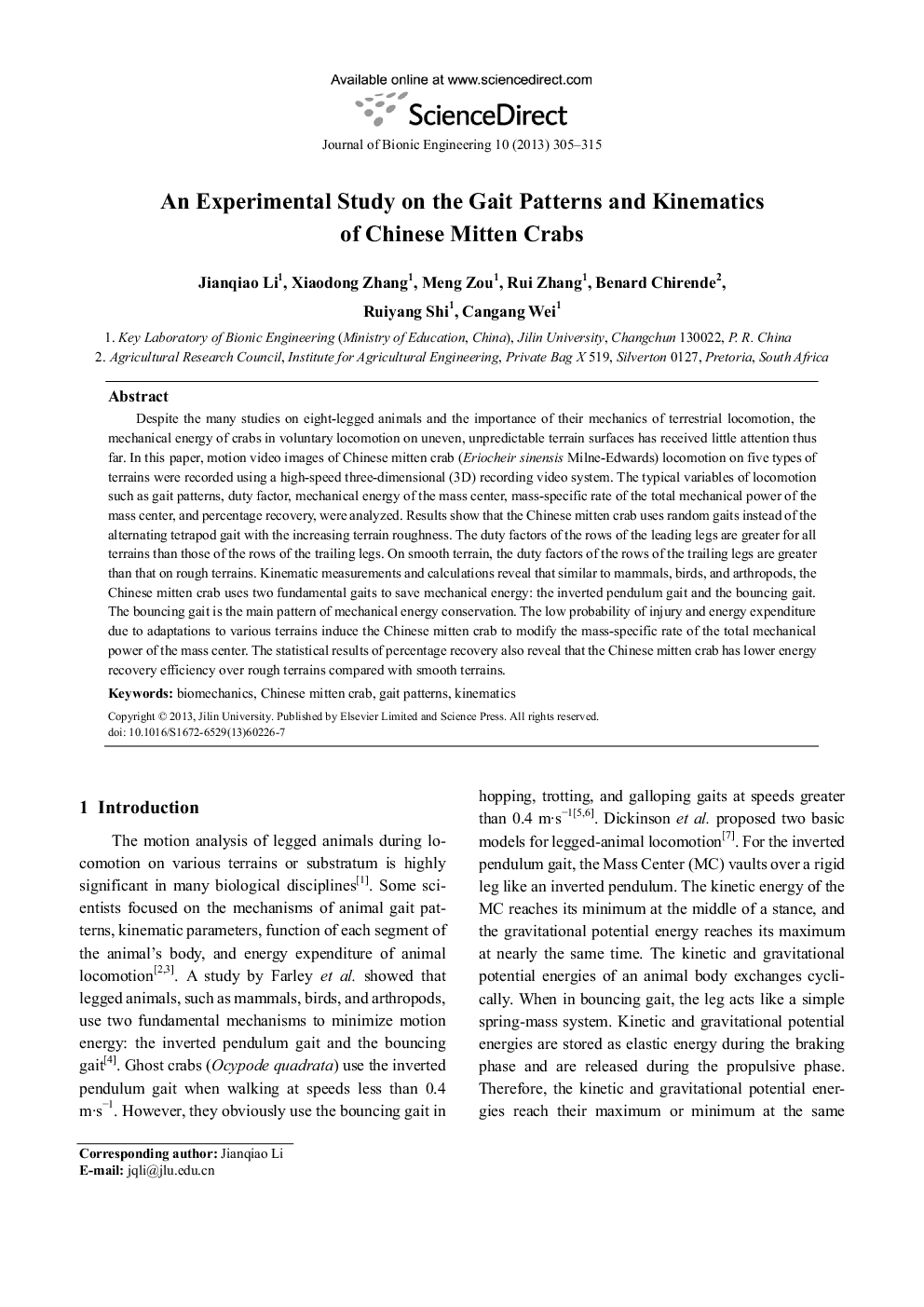| کد مقاله | کد نشریه | سال انتشار | مقاله انگلیسی | نسخه تمام متن |
|---|---|---|---|---|
| 826706 | 907946 | 2013 | 11 صفحه PDF | دانلود رایگان |

Despite the many studies on eight-legged animals and the importance of their mechanics of terrestrial locomotion, the mechanical energy of crabs in voluntary locomotion on uneven, unpredictable terrain surfaces has received little attention thus far. In this paper, motion video images of Chinese mitten crab (Eriocheir sinensis Milne-Edwards) locomotion on five types of terrains were recorded using a high-speed three-dimensional (3D) recording video system. The typical variables of locomotion such as gait patterns, duty factor, mechanical energy of the mass center, mass-specific rate of the total mechanical power of the mass center, and percentage recovery, were analyzed. Results show that the Chinese mitten crab uses random gaits instead of the alternating tetrapod gait with the increasing terrain roughness. The duty factors of the rows of the leading legs are greater for all terrains than those of the rows of the trailing legs. On smooth terrain, the duty factors of the rows of the trailing legs are greater than that on rough terrains. Kinematic measurements and calculations reveal that similar to mammals, birds, and arthropods, the Chinese mitten crab uses two fundamental gaits to save mechanical energy: the inverted pendulum gait and the bouncing gait. The bouncing gait is the main pattern of mechanical energy conservation. The low probability of injury and energy expenditure due to adaptations to various terrains induce the Chinese mitten crab to modify the mass-specific rate of the total mechanical power of the mass center. The statistical results of percentage recovery also reveal that the Chinese mitten crab has lower energy recovery efficiency over rough terrains compared with smooth terrains.
Journal: Journal of Bionic Engineering - Volume 10, Issue 3, July 2013, Pages 305-315